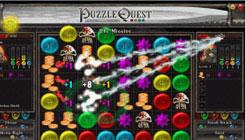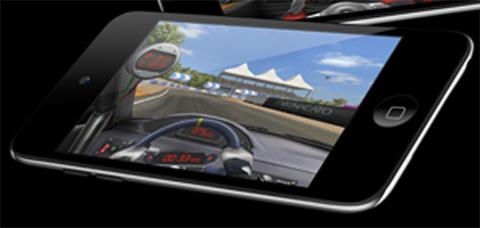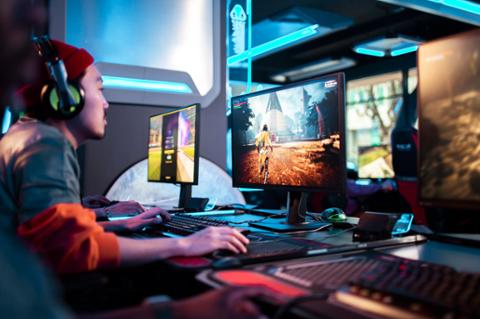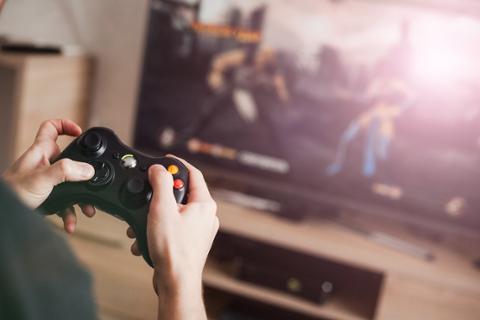
 Web games and smartphone apps have been using the match-three mechanic for a few years, but recent games have carried it beyond the obvious Bejeweled-style titles. The mechanism — where a player matches up three or more tiles to make them disappear — is quite extensible, with varying starting positions and possible outcomes. Most games use an 8 x 8 grid, but other sizes work. The beauty of the match-three mechanic is that a skillful and quick-thinking player can win against a more powerful opponent. It adds an extra dimension to a battle. The basic mechanism is dragging a row or column to line up three, four or even five of a particular color or graphic object. Puzzle Quest was the first game to build a role-playing storyline around the match-three mechanic where it was used to fight a battle. With elements represented by color disks, money, mana and two types of skulls, lining up three to five items of one color adds that count to your element stocks. They can then be used to cast spells and knock points off your opponent. Lining up skulls takes the points off directly. Your character has to undertake quests that expand the game world and when you meet a monster, you fight a match-three battle.
Web games and smartphone apps have been using the match-three mechanic for a few years, but recent games have carried it beyond the obvious Bejeweled-style titles. The mechanism — where a player matches up three or more tiles to make them disappear — is quite extensible, with varying starting positions and possible outcomes. Most games use an 8 x 8 grid, but other sizes work. The beauty of the match-three mechanic is that a skillful and quick-thinking player can win against a more powerful opponent. It adds an extra dimension to a battle. The basic mechanism is dragging a row or column to line up three, four or even five of a particular color or graphic object. Puzzle Quest was the first game to build a role-playing storyline around the match-three mechanic where it was used to fight a battle. With elements represented by color disks, money, mana and two types of skulls, lining up three to five items of one color adds that count to your element stocks. They can then be used to cast spells and knock points off your opponent. Lining up skulls takes the points off directly. Your character has to undertake quests that expand the game world and when you meet a monster, you fight a match-three battle.
Different Monsters, Different Scores
Different monsters start with higher point totals or spells of their own. Some spells can reduce your opponent's element stocks or augment your own, thus making the fight more interesting. That's the beauty of the match-three device: It can turn a dice-rolling game into one where your skills significantly affect the outcome. The iOS game 10000000 (named after the score you need to escape) is about an explorer trapped in a dungeon who tries to escape by fighting monsters and unlocking chests. He has to match swords or magic wands to do damage to opponents, or match keys to open locks. Wood and stone build up, making it harder to match weapons or keys, so you have to collect them to build your castle. By adding to your accumulated gold from achieving tasks and killing monsters, you can improve your character. Get four or five matches and you gain one-shot items like keys and weapons to damage your opponents. It's one of those "I'll just have another go" games. You blink and two hours have whizzed by.
Building on Match Three
If you're thinking of using match three, don't just design another match-three game, make it a mechanism in the game, not the whole game. Think about how it fits in. The one-minute limit of Bejeweled Blitz might suit a game with lots of short, sharp battles, like a Risk variation. Instead of adding armies to a country, you might use them as reserves. For instance, on a board with infantry, artillery and cavalry (or tanks), you might have to capture a certain number to win in a minute by lining them up. By clicking an infantry reserve card, you add five more infantry nits randomly to the board, making it easier to reach the count. Get four or five in a line and you gain more reserves or other bonuses. It's an abstraction, but no more than rolling dice, and one that lets you bring more to the game. Other variations could include rotating the board 90 degrees, so when lines are matched, the gravity-pulled replacements come in from a different side. There are many possibilities. Have fun!


